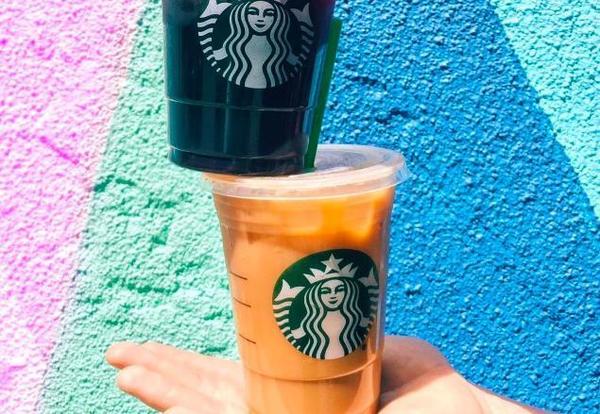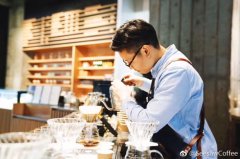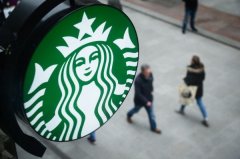Starbucks turns to commercial expansion with launch of bottled Frappuccino expansion line

For professional baristas, please follow the coffee workshop (Wechat official account cafe_style)
After the introduction of ready-to-drink coffee, Starbucks recently started a ready-to-drink tea beverage business in China. The two newly released products are bottled Black Tea Star Frappuccino and bottled Matcha Star Frappuccino. It is reported that the beverage has been first listed in Tmall supermarket. This is the third time Starbucks has launched bottled Frappuccinos in the Chinese market since it launched four bottled Frappuccinos tailored for Chinese consumers last September.
In fact, in recent years, Starbucks has made frequent moves in China. In addition to digital initiatives such as opening Tmall's flagship store, WeChat Pay and partnering with Wechat, Starbucks has also introduced its tea brand Teavana to China and continues to expand its stores, saying that there will be 5000 stores in mainland China by 2021. According to Zhu Danpeng, a food and beverage industry researcher at the China Brand Research Institute, Starbucks, which has a mediocre performance in the US market and has encountered a ceiling of growth, sees China as the next growth engine. And these actions against the Chinese market are more like the "stubborn" Starbucks constantly making compromises to the Chinese market.
Can consumers buy it?
In an interview with China Business Daily, Starbucks mentioned the taste of the two new Frappuccino instant tea products, with the help of "big data" from thousands of Chinese stores to make it easier to please Chinese consumers. Bottled matcha and black tea star cappuccino are also seen as an extension of the Starbucks experience outside the store. It is not difficult to find that the above bottled new products correspond to matcha lattes and black tea lattes sold in stores.
The reporter noticed that at present, in Tmall supermarket, the price of matcha Star Frappuccino (281ml × 6 bottles) is 92 yuan, but there is no sign of new products in Starbucks stores, convenience stores and merchants. During a visit to Starbucks' store in Xintiandi, Shanghai, the clerk said he had not received any notice about when to start selling at the store. However, according to Starbucks' public relations director, the products will be sold in shopping malls, supermarkets, convenience stores and e-commerce platforms in major cities across the country for a long time.
Bottled Frappuccino is considered a profitable product by Starbucks. In the United States, with bottled Frappuccino, Starbucks has become a leading brand with a double-digit annual growth rate of 75% of the ready-to-drink market since 2011. In China, after Starbucks announced a partnership with Master Kang in March 2015, the two sides produced Starbucks ready-to-drink products on Chinese mainland and shared distribution channels in the local market. Before that, all bottled cappuccinos were imported directly from the United States. However, it was not until September last year that the four ready-to-drink products that the two sides worked together officially hit the shelves, showing a bit of lag in time.
With regard to Starbucks' continuous expansion of its product line of bottled Frappuccino, brand marketing expert Lu Shengzhen believes that Starbucks is currently squeezed by instant coffee Nestle and Maxwell, and Coca-Cola, Ipoh, Uni-President and Wa have also launched instant coffee one after another. it also intends to create new economic growth points through new category expansion. In addition to the ready-to-drink market being eroded by the beverage industry, Starbucks is also constantly squeezed by its peers. Starbucks has previously launched moon cakes, zongzi and even tofu vegetable rolls, pepper mushrooms and other products, and these attempts through product diversification to make expansion activities, although active but also more passive and helpless.
In fact, when it comes to tea, Starbucks launched the Chawana Teavana and has special stores, but last year it closed four Teavana Tea in the United States. Chawana chose to sell in existing stores in China, and in Lu Shengzhen's view, this product, which originally seemed to have a more market in China, did not seem to have made a particularly significant breakthrough. Whether the bottled Star Bingle Tea can be recognized by consumers remains to be tested by the market. He believes that the tea beverage involves a series of complex factors such as operation, management and cost, and the base of cost expenditure is large, and there are many factors that may lead to its loss. In 2016, the revenue and growth rate of tea beverage giants such as Kang Shifu and Uni-President continued to decline, and the entire tea beverage market also showed a grim situation, with 47 tea beverage companies losing money, accounting for 53%. Starbucks is facing a highly competitive beverage market. Zhu Danpeng also provides a similar view, in addition to high-cost tea Xiaoming students, tea π and other brands, with the rise of street tea stores such as Xi Tea and Gong Tea, it has a certain impact on Starbucks new products, in addition, in terms of channels and prices, Starbucks has a competitive challenge. "if the price is too high and it is only sold in ka, it is estimated that the sales are not good, the most important thing is to put it in a 24-hour convenience store."
Further "compromise" to the Chinese market
In fact, in addition to adding new flavors to bottled Frappuccinos, Starbucks has made frequent moves in China in recent years.
Promoting digitization is one of Starbucks' strategies. In November 2015, it opened a flagship store in Tmall, selling star gift cards and electronic shopping vouchers that do not support star cards. Last December, WeChat Pay finally began to support Starbucks stores on the mainland, followed by consumers "thankfully", holding hands with local mobile payments is considered to be accelerating the localization of Starbucks. Earlier this year, Wechat and Starbucks jointly launched the "say with Star" campaign, a "social gift" launched on the Wechat platform, where Wechat users can give each other coffee coupons or digital gift cards to add personalized blessings.
In addition, Starbucks has also launched catering products in China in addition to coffee to retain more consumers and improve the profitability of its stores. In July last year, Starbucks launched the "fresh Food" project in parts of China, launching 38 meals in 12 provinces, including Sichuan, Qinghai and Henan, increasing the proportion of food products in Starbucks stores. Starbucks has also introduced its tea brand Teavana to the Chinese market, and the "decaffeination" approach is also seen as a localized move by Starbucks to dig deep into the Chinese market.
The way of driving performance through store expansion continues. Starbucks has announced that it will have 5000 stores in mainland China in 2021. According to Starbucks' store number plan, Starbucks will have to open at least 500 new stores in each of the next four years to meet its target. It currently has about 2300 stores in mainland China.
Zhu Danpeng believes that all these practices are a compromise made by the "stubborn" Starbucks to the Chinese market. In fact, the financial data also show Starbucks' current passive situation. On April 27, Starbucks reported second-quarter 2017 results, showing that its global and u.s. same-store sales grew by just 3%, falling short of wall street expectations of 3.7% and 3.5%. In addition, Starbucks' global revenue of $5.29 billion also fell short of the estimated $5.41 billion. Starbucks said it would no longer include its expected target in its financial results. Apart from its mediocre performance in its home base, Starbucks is struggling in the UK. As of October 2, 2016, Starbucks'UK turnover pre-tax profit fell 60% year-on-year due to significant economic and geopolitical resistance. Starbucks has closed some stores or transferred franchises in the UK. At present, only about 1/3 of the 894 stores in the UK are owned by Starbucks.
The results show that the Asia-Pacific region is relatively impressive, with Starbucks opening 1015 new stores in the past 12 months and revenue up 13% in the second quarter compared with the same period. And the biggest part of the contribution comes from China. The financial report also mentioned that more Chinese consumers have developed the habit of drinking coffee or more coffee, and their number of transactions at Starbucks has increased by 6%, resulting in a 7% increase in same-store sales in China. "when the performance is relatively lackluster, Starbucks is constantly trying to find new profit engines in China, and there may be more things it needs to compromise or echo the Chinese market in the future." Said one person in the beverage industry who spoke on condition of anonymity. For example, Starbucks also reported earlier that it might open its delivery business, but Starbucks denied this news in an earlier interview with the media.
But Lu Shengzhen points out that the Chinese market that Starbucks is facing now may be much more complex than it was to rely solely on its expansion strategy to grow rapidly. It is worth noting that Starbucks is not the only coffee brand to expand its stores in the Chinese market. Competitors include European and American coffee brands such as Costa and Pacific. South Korean brands such as Zoo Coffee and Man Coffee quickly distribute the Chinese market by direct marketing or joining. Starbucks increased the speed of opening stores, so that Starbucks began to shift its position from an impressionable luxury brand to a storefront on a bad street. Zhu Danpeng also pointed out that the most critical issue is that after the store expansion, it will cause worries in several aspects, such as the supply chain, staff training, the quality of store service and whether the team can keep up in time.
Lu Shengzhen also believes that Starbucks has shifted to a diversified product line because the turnaround rate of simple coffee shops is low, consumers stay in the store for too long, and high rent and decoration costs are unable to meet its sufficient profits. However, as a result of the transformation of diversified product lines, Starbucks may lose its professional sense of coffee more and more. Coffee is also a very professional thing. Many consumers who enter the store may not really understand coffee, and the level of customers will be broken. Customers' sense of superiority will also be greatly reduced. "the pursuit of high share, the pursuit of full-product, can only say that Starbucks gradually does not care much about its own professionalism, and more is the pursuit of purely commercial expansion." Lu Shengzhen said.
At the same time, however, the pursuit of profits has also had a negative impact on it. Last year, for example, Starbucks suffered a "medium Cup incident" in China. Lin Guotong, a consumer, mentioned in an open letter to Starbucks China CEO Wang Jingying that for six years, Starbucks shop assistants always raised objections to their cup-shaped choices, which prompted many netizens to complain about Starbucks.
Important Notice :
前街咖啡 FrontStreet Coffee has moved to new addredd:
FrontStreet Coffee Address: 315,Donghua East Road,GuangZhou
Tel:020 38364473
- Prev

It is more expensive than Starbucks, with hundreds of cups per day in a single store, and Seesaw coffee won round An of Hony 45 million yuan.
Professional baristas exchange please follow the coffee workshop (Wechat official account cafe_style) Xinya NewSeed (Wechat ID:pelink) news on June 2, boutique coffee chain brand Seesaw has recently completed 45 million yuan A round of financing, investor Pak Fu Holdings (Hongyi Investment Restaurant Investment Management platform). After the completion of this round of financing, Seesaw will continue to go to Beijing and Shenzhen
- Next

Starbucks buy one get one free burst of people some stores are not in the limelight.
Professional barista exchanges Please pay attention to the Coffee Workshop (Wechat official account cafe_style) Today is a make-up day, which has left many office workers in a depressed mood. Coupled with the fact that people on holiday in torrential rain have nowhere to go, many people are crowded in coffee shops to enjoy. Starbucks offered buy one get one free and set off a crowd. Netizens noticed that some stores in Taiwan did not participate in the discounts. Today is a make-up day, working on holidays plus big
Related
- Customers have "changed" Manner's new products! Shop assistant: Please don't mess around!
- Remove sockets in customer areas at Starbucks stores?! Netizen: I won't go if I really tear it down
- What is the difference between the taste steps of sun-dried coffee and washed coffee? Why is sun-cured coffee sweeter and washed coffee sour?
- The recipe for salty grapefruit dirty is revealed! Coffee Festival salty grapefruit dirty coffee making materials parameters ratio milk share!
- How about the flavor of Sunlight 74158 at Sidamo Banshaha Mathieu Processing Factory in Ethiopia? 74158 Share the proportion of coffee brewing parameters!
- What effect does Italian American coffee with filter paper have? Will coffee taste better if it is put on filter paper at the bottom of the powder bowl?
- What is the color difference in coffee beans? What are the characteristics of honey processed coffee beans? Why are the anaerobically treated coffee beans uneven in color?
- How does novice Xiaobai quickly get started and make coffee? Newbies learn to make coffee by hand and share the specific steps and process process!
- Costa tea has a shelf life of 100 years?! Expert: Unable to verify
- It's a huge uproar! American milk addition was rejected by Manner employees?!

